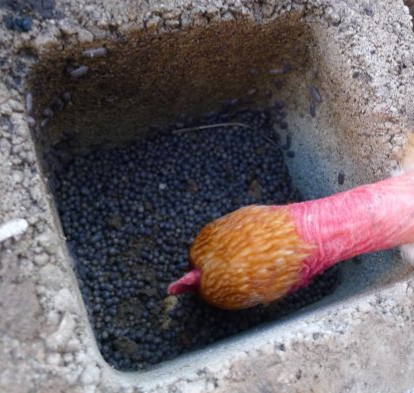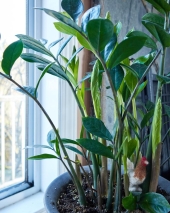


10 Podcast Review of the book Just Enough by Azby Brown
will be released to subscribers in:
soon!



 3
3




Regards, Scott
 14
14




Pecan Media: food forestry and forest garden ebooks
Now available: The Native Persimmon (centennial edition)
 10
10




 1
1




Regards, Scott
 2
2




 1
1




Regards, Scott
 4
4




Regards, Scott
 7
7




Regards, Scott
 3
3




Visit Redhawk's soil series: https://permies.com/wiki/redhawk-soil
How permies.com works: https://permies.com/wiki/34193/permies-works-links-threads
 7
7






"We're all just walking each other home." -Ram Dass
"Be a lamp, or a lifeboat, or a ladder."-Rumi
"It's all one song!" -Neil Young
 7
7




This is all just my opinion based on a flawed memory

 1
1




Regards, Scott
 6
6




Regards, Scott
 4
4




 1
1




 2
2




Regards, Scott
 2
2




 6
6




"The rule of no realm is mine. But all worthy things that are in peril as the world now stands, these are my care. And for my part, I shall not wholly fail in my task if anything that passes through this night can still grow fairer or bear fruit and flower again in days to come. For I too am a steward. Did you not know?" Gandolf

 10
10




Be joyful, though you have considered all the facts. ~Wendell Berry
 2
2




That makes me wonder if you were to put some of those leaves in a blender and make a fairly strong "drench" for the wood chips just before planting/transplanting seedlings, would that be enough to discourage the pill bugs until the plants were large enough to cope with some pest pressure?Incidentally, we could grow asparagus, garlic, artichokes or cardoon, tulips, echinacea, and a few other medicinal herbs and flowers without issue in them. So strong flavored or bitter plants seem to not be on the pillbug's favored menu.
Visit Redhawk's soil series: https://permies.com/wiki/redhawk-soil
How permies.com works: https://permies.com/wiki/34193/permies-works-links-threads
 1
1




Zone 6, 45 inches precipitation, hard clay soil














 4
4




Jay Angler wrote:Kim Goodwin wrote:
That makes me wonder if you were to put some of those leaves in a blender and make a fairly strong "drench" for the wood chips just before planting/transplanting seedlings, would that be enough to discourage the pill bugs until the plants were large enough to cope with some pest pressure?Incidentally, we could grow asparagus, garlic, artichokes or cardoon, tulips, echinacea, and a few other medicinal herbs and flowers without issue in them. So strong flavored or bitter plants seem to not be on the pillbug's favored menu.
Be joyful, though you have considered all the facts. ~Wendell Berry










 3
3




Be joyful, though you have considered all the facts. ~Wendell Berry
 1
1




Kim Goodwin wrote:I've had terrible pillbug problems develop from using wood chips and woodchip-based compost. I stopped using it because of that issue. I've caught them in the act of eating all sorts of seedlings including small transplants. I looked at them very close up - they were definitely eating the plants. Lettuce transplants would be gone in a couple days. They seem to like plants very tender.
 1
1




R. Han wrote:
The question is why do you grow lettuce with wood chips? Wood chips create fungal dominated soil, while lettuce prefers bacterial soil.
So maybe the pill bugs felt that the plant was in the wrong environment?
A build too cool to miss:Mike's GreenhouseA great example:Joseph's Garden
All the soil info you'll ever need:
Redhawk's excellent soil-building series





 2
2




 2
2




Are you willing to test the "if it's too dry" theory, gently with your pets? Give them only quite dry dead stuff (like my farm in the summer drought) and a live plant and see how they react? Please don't push it to the point you hurt the little guys - experimentation doesn't need to be nasty!Donald Smith wrote:I keep some species of isopods (pill bugs) as pets believe it or not, and I have noticed that they will only eat green plant material if they have nothing else to eat, and that they eat decaying vegetation before eating green material. I feed them scraps from our leftover veggies from time to time.
Their favourite is dead tree leaves, it seems to get them “ in the mood” if you know what I mean 😏.
Visit Redhawk's soil series: https://permies.com/wiki/redhawk-soil
How permies.com works: https://permies.com/wiki/34193/permies-works-links-threads
 2
2




Jay Angler wrote:Are you willing to test the "if it's too dry" theory, gently with your pets? Give them only quite dry dead stuff (like my farm in the summer drought) and a live plant and see how they react? Please don't push it to the point you hurt the little guys - experimentation doesn't need to be nasty!
 7
7




 5
5




 1
1




Visit Redhawk's soil series: https://permies.com/wiki/redhawk-soil
How permies.com works: https://permies.com/wiki/34193/permies-works-links-threads
 1
1




Jay Angler wrote: Have you ever added the frass to a seed-starting mix? A friend once brought me black soldier fly frass and it was recommended for that use.
 2
2





Zone 6, 45 inches precipitation, hard clay soil




 1
1




Donald Smith wrote:I keep some species of isopods (pill bugs) as pets believe it or not, and I have noticed that they will only eat green plant material if they have nothing else to eat, and that they eat decaying vegetation before eating green material. I feed them scraps from our leftover veggies from time to time.
Their favourite is dead tree leaves, it seems to get them “ in the mood” if you know what I mean 😏.




 1
1




“We can complain because rose bushes have thorns, or rejoice because thorn bushes have roses.” — Abraham Lincoln
 1
1




 1
1




“We can complain because rose bushes have thorns, or rejoice because thorn bushes have roses.” — Abraham Lincoln

|
please buy this thing and then I get a fat cut of the action:
The new kickstarter is now live!
https://www.kickstarter.com/projects/paulwheaton/garden-cards
|







